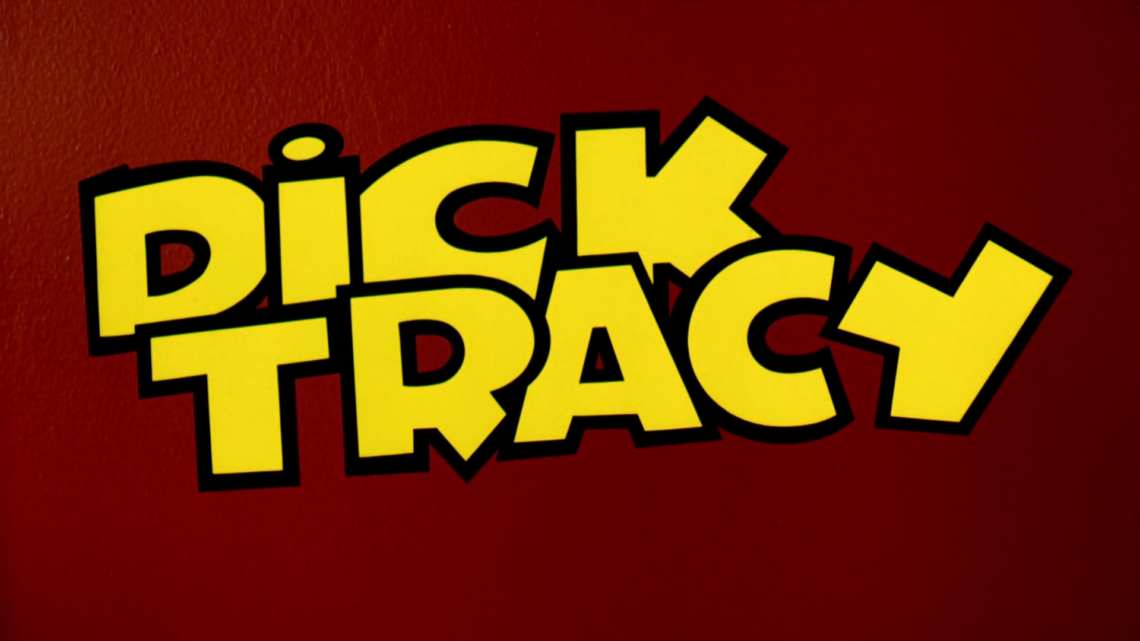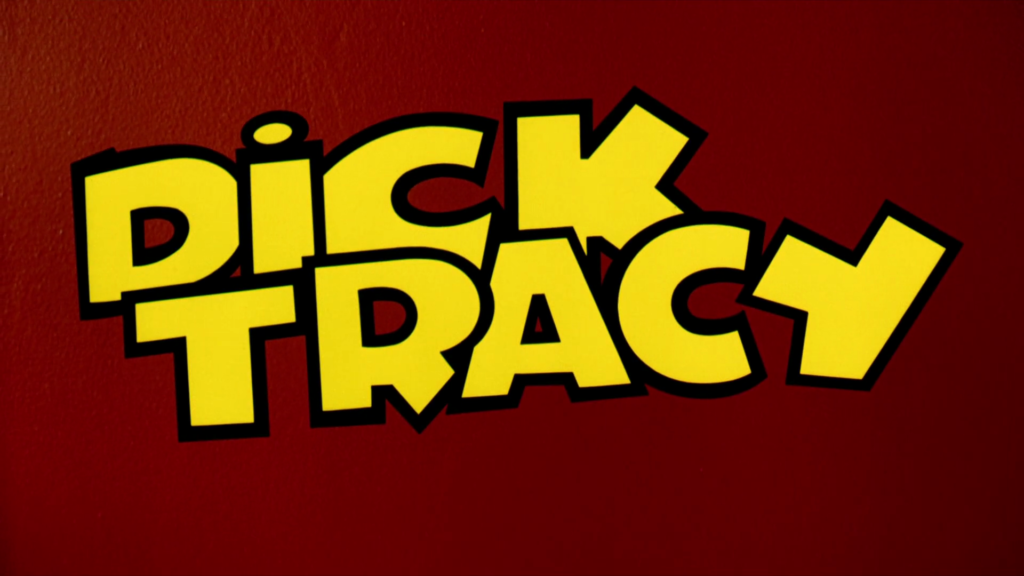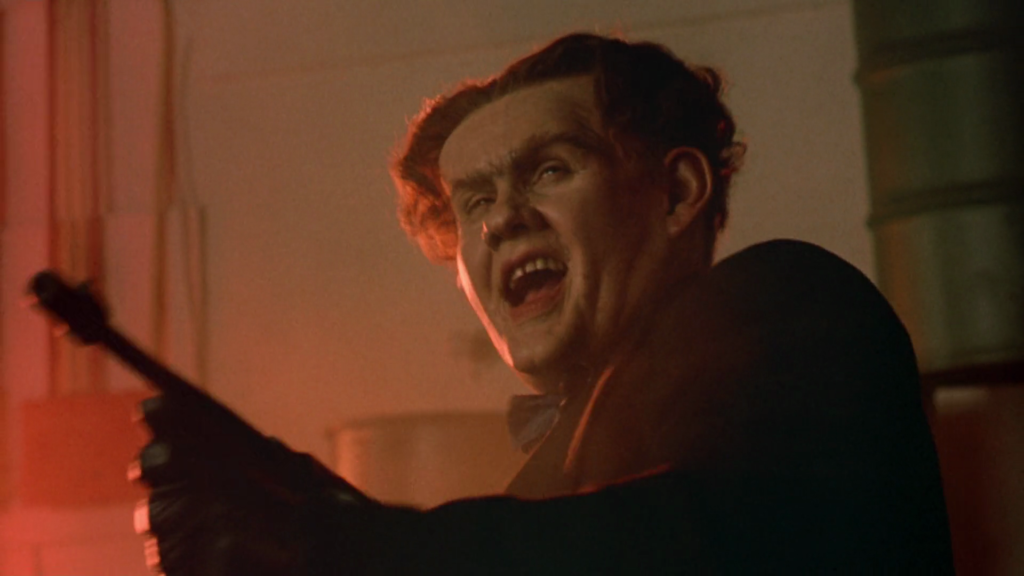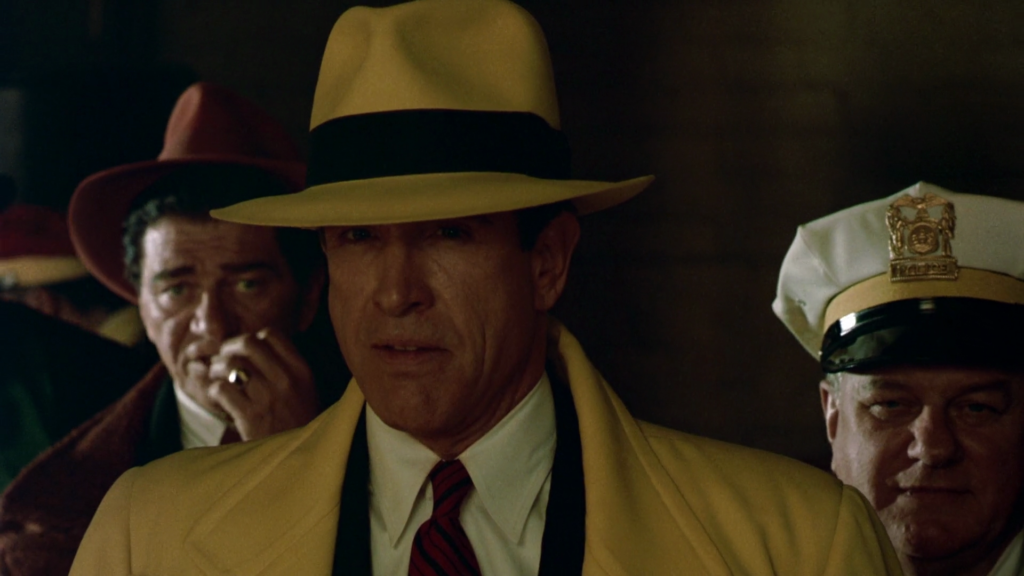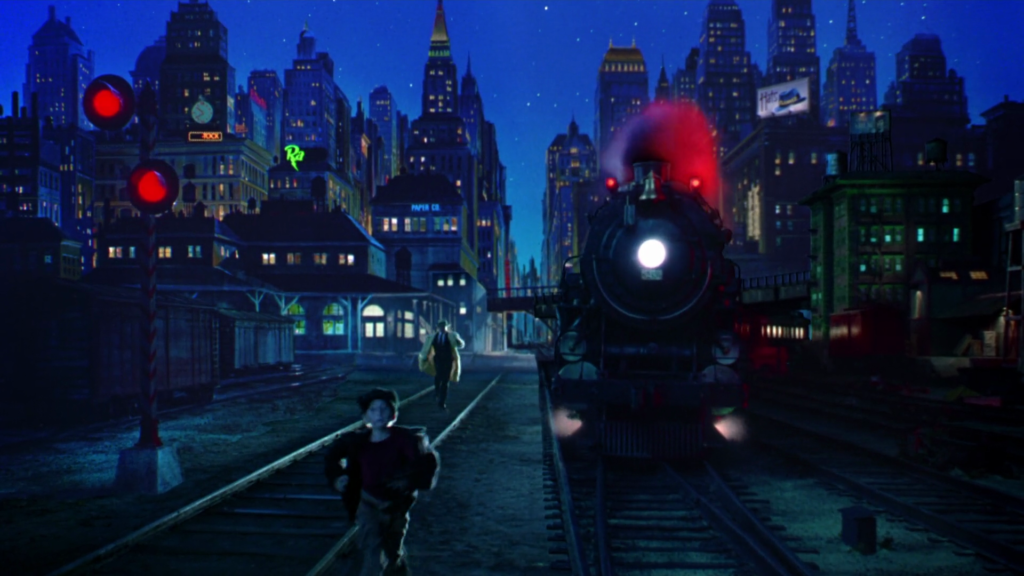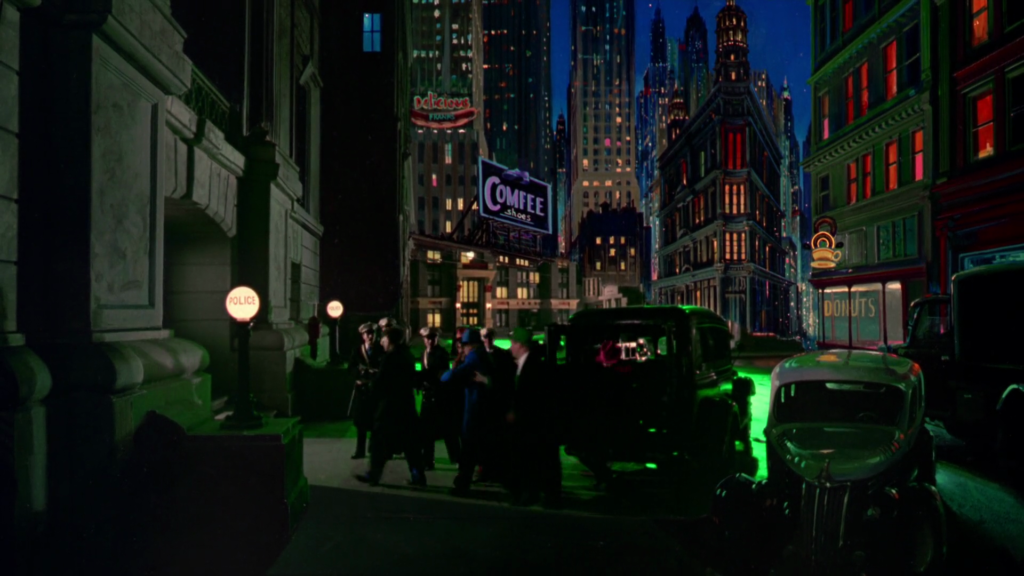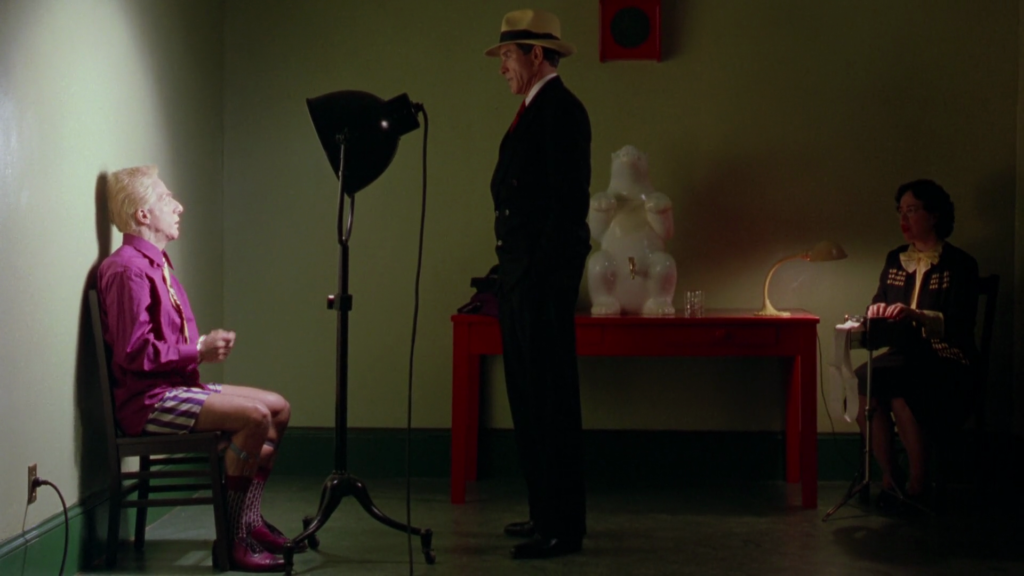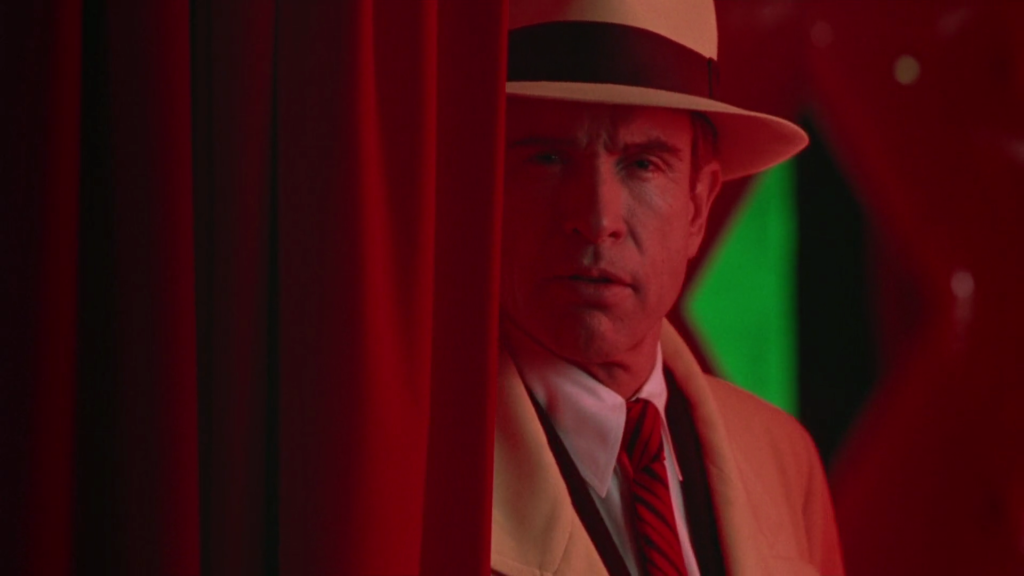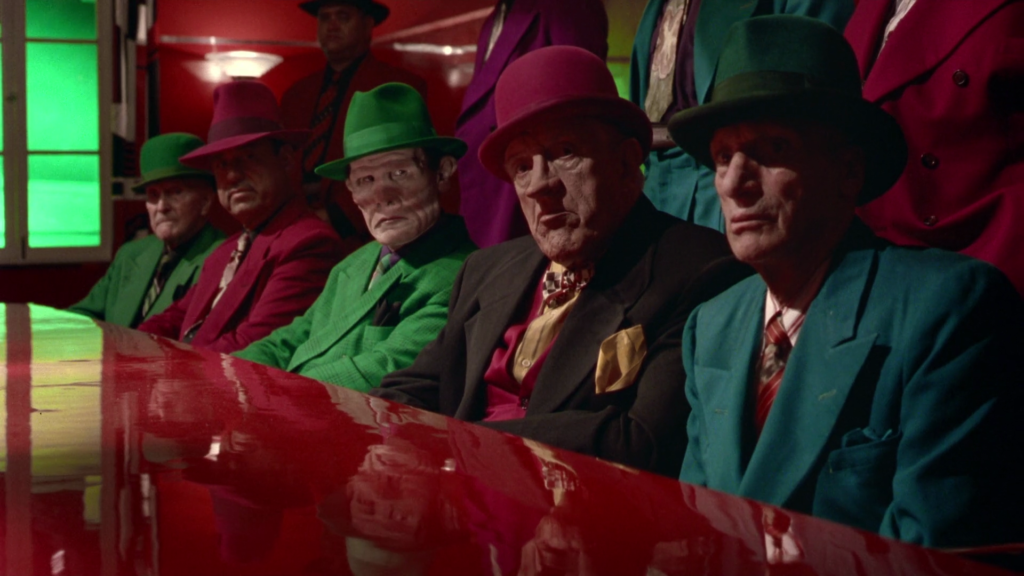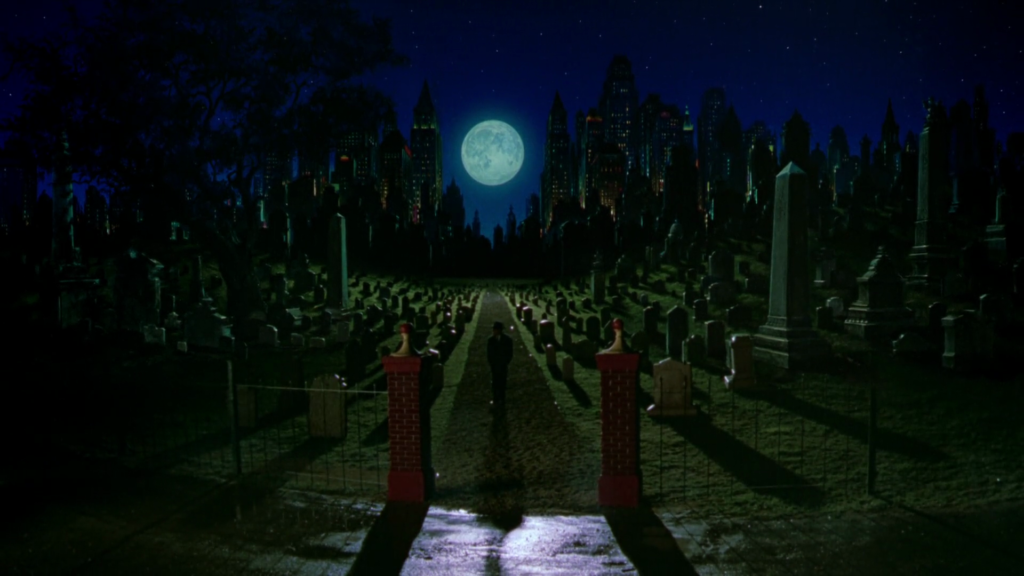-
#399 – Dick Tracy (1990)
Dick Tracy (1990)
Film review #399
Director: Warren Beatty
SYNOPSIS: Detective Dick Tracy is busy attempting to clean up the city of the criminals that are terrorising it. He rescues a homeless kid from a criminal, and ends up having to look after him along with his girlfriend Tess Trueheart. Meanwhile, Big Boy Caprice has united all of the city’s mobsters under his rule, and the only way Tracy can get him locked up is to convince Breathless Mahoney to testify against him, who seems to have her own agenda altogether…
THOUGHTS/ANALYSIS: Dick Tracy is a 1990 film based on the comic strips of the same name created by Chester Gould. The film starts out with Dick Tracy on the trail of criminal Lips, who turns up dead. Tracy suspects the work of Big Boy Caprice, but his evidence hinges on the testimony of Breathless Mahoney, who witnessed Lips being buried in cement (Tracy found one of her earrings at the scene of the crime). Tracy also manages to apprehend a nameless kid who is pick-pocketing and decides to have the kid stay with him. Meanwhile Big Boy Caprice has managed to unite all of the city’s criminals under his rule, and Tracy has to find a way to put a stop to them. The story is…well, there’s lots of it. On one hand, it adds in a lot of the characters and ideas from the comics, but on the other, it adds too many without exploring them in depth; it just throws the characters in with a bunch of others with no time to really develop them. The opening of the film basically throws the viewer into the deep end with Tracy trying to apprehend these criminals that he clearly has a history with, but we aren’t given much of an insight into it and why Tracy is so intent on pursuing these criminals at all costs. In one sense, in keeping with the comic strip origins, not everything needs to be explained, nor for a reader to read every single comic strip to understand what’s going on. In the case of a self-contained film, however, the motivations of the characters really need to be at least signposted through recaps, flashbacks or some other narrative device. The film is simple enough to follow, and doesn’t have too many interruptions to its flow, but there’s such an interesting setting and cast of characters that aren’t delved into that it is a little disappointing. At least the film sticks to the comic’s origins in the mobster-filled, crime-noir genre rather than going into the sci-fi stories involving aliens living on the Moon that the comic went into in the sixties. The only sci-fi element that shows up is the communicator watch that Tracy wears, and that doesn’t really stand out too much from the setting. A small problem I have with the ending is that Caprice ends up getting killed, which I think would have been better if instead he was arrested and sent to jail, as that’s what Tracy’s goal was throughout the whole film.
The film’s biggest strength is by far its cinematography and style. I don’t think there is anything else like it (especially at the time it was released). The backgrounds and cityscape shots are large scale matte paintings done in a traditional comic perspective that are brought to life with amazing detail and colour. The colour on the whole is incredibly striking, with high contrast props, sets and costumes making individual elements stand out in shots. For example, Tracy’s distinctive cream coloured hat and coat are saturated and give him a commanding presence in the dark shots of the city at night. Every character too wears a similar high saturated colour, making them recognisable and visually appealing. In doing so, the film overcomes the paradox of having a crime-noir in full colour by replicating the high contrast of ‘noir’ through highly saturated colour. Not only this, but it also manages to pay homage to the typically flat colours associated with comic strips. All of this is a remarkable achievement that also doesn’t feel very dated. The other striking element of the film’s style is it’s use of prostheses and make-up to give the villain’s comic book proportions. For example, Pruneface has these huge wrinkles covering his face that make him look like a prune, Flattop has a…flat top of his head. It’s cartoony, but they all still have a menacing aura about them thanks to the exceptional work of the prosthesis. If you’re going to remember this film for anything, then it is its style and vision which will stay with you.
The characters themselves definitely have plenty of personality, though as mentioned there could do with exploring in greater depth some of these interesting-looking people. Tracy, played by Warren Beatty, who also directed the film, feels like he’s channelling Harrison Ford (particularly Indiana Jones) in his performance. Sometimes he is straight-laced, sometimes he is quick-thinking and action-oriented. Al Pacino as Big Boy Caprice has a commanding presence and the prostheses that fills out his body compliments that nicely. Breathless Mahoney is played by Madonna, who turns in an alluring performance as well as performing some original cabaret songs that hit the mark. The mixture of drama and comedy again is executed well, with a good amount of visual gags that are easy to miss given Tracy’s often straight-faced response. His interactions with the character Mumbles (who mumbles everything he says) is in particular a chance for the film to strike a humourous note.
Overall, Dick Tracy offers a visual treat that manages to pull off the aesthetics of crime-noir and comic book drama with a striking use of colour and convincing make-up that situates every element of the film perfectly in the world it creates. The result is a memorable visual experience coupled with some dramatic and over-the-top performances. The story suffers from having too much going on and not enough depth to the most important elements, but on the whole it is still enjoyable enough to sit through.
